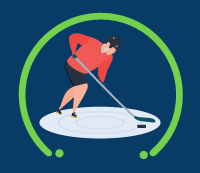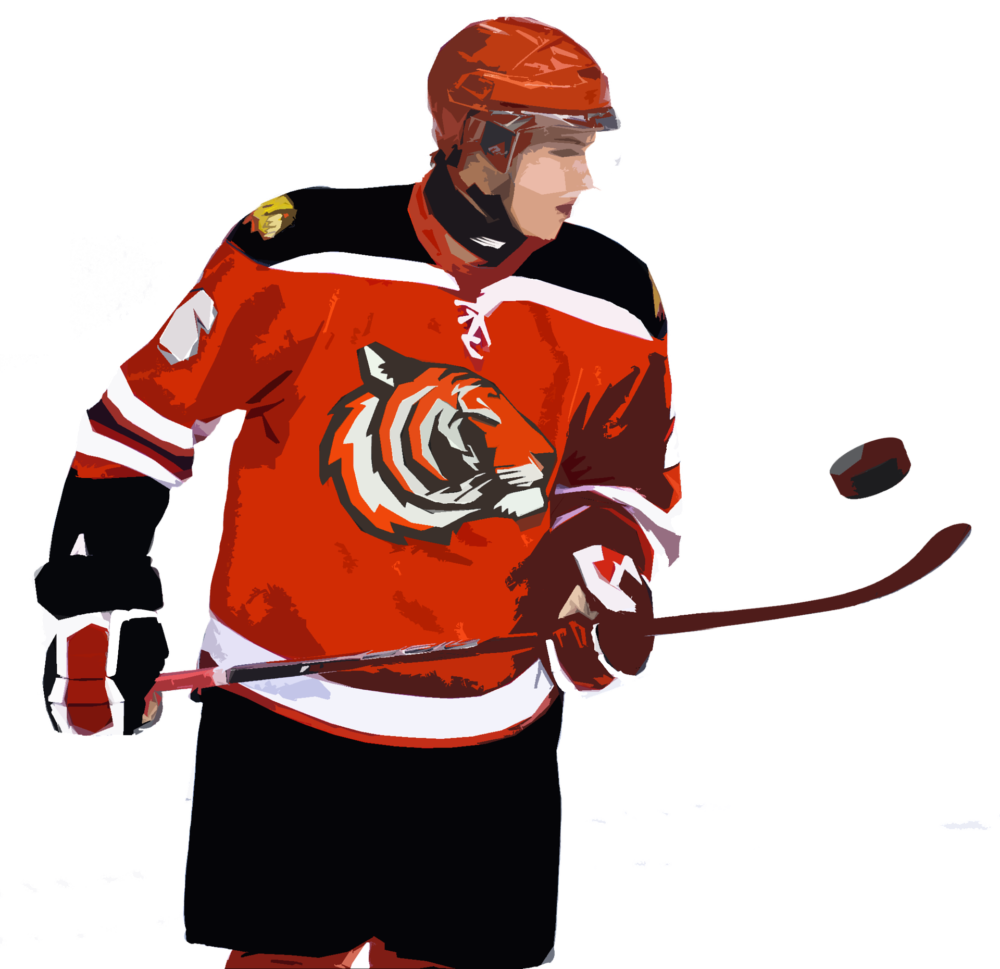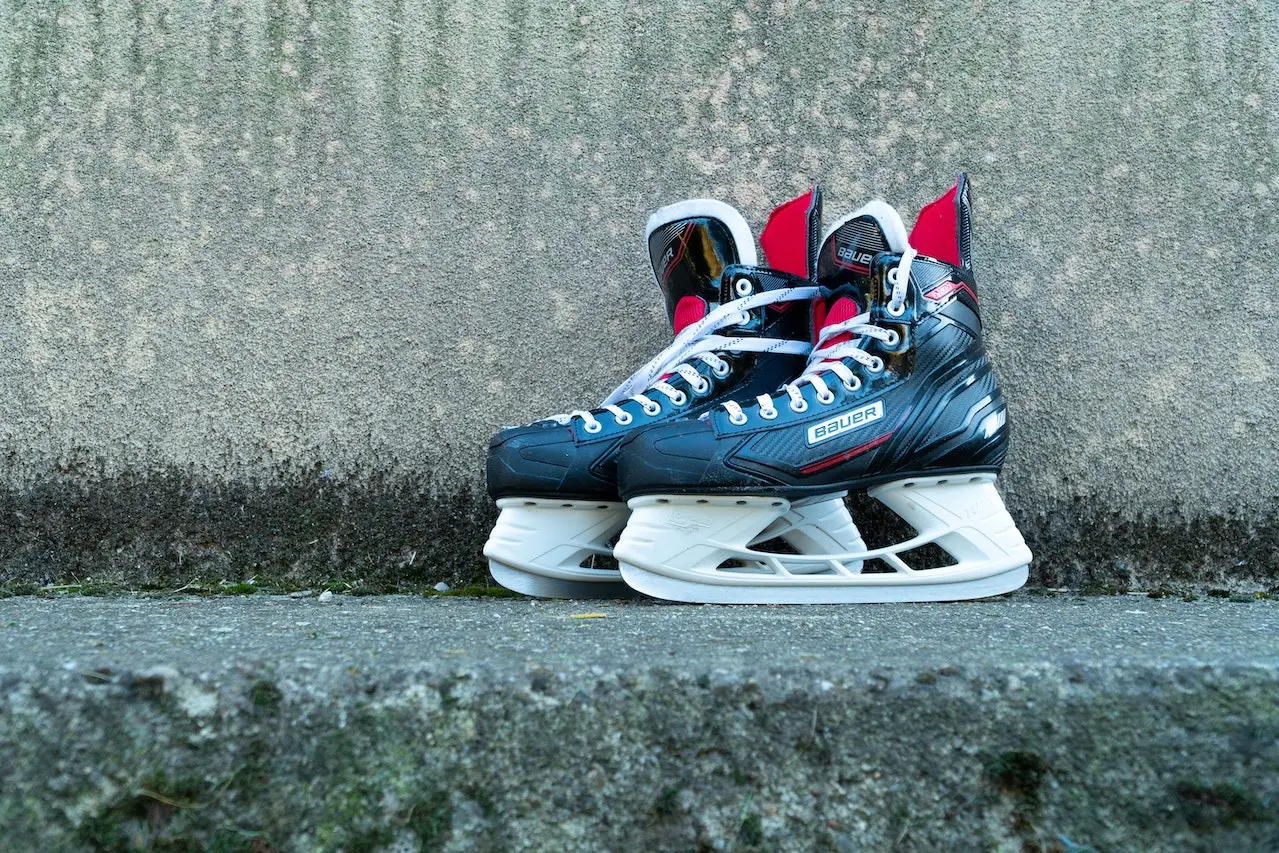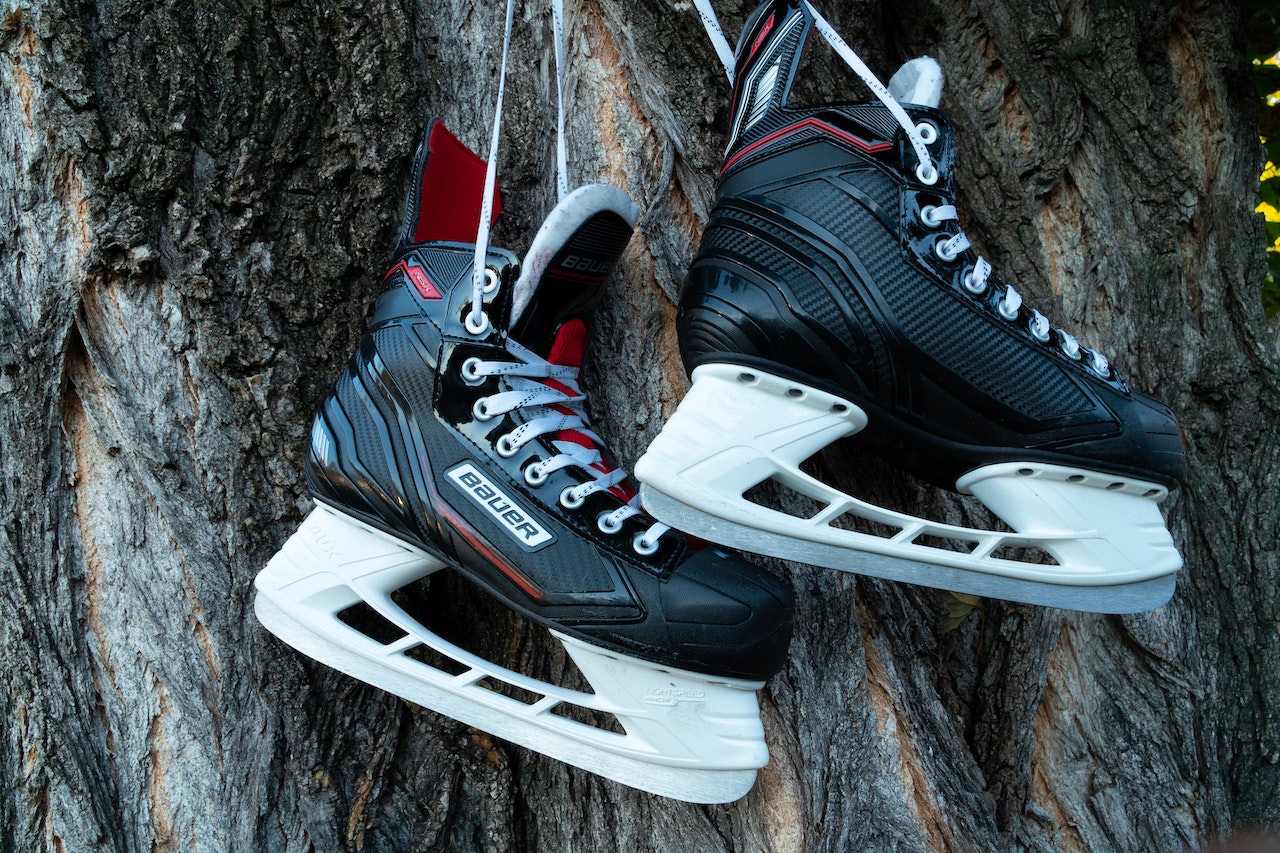Speed and agility are crucial for all hockey players. On the ice, they must move swiftly, adapt to sudden changes in direction, and accelerate rapidly to outperform their opponents. These skills are developed through consistent practice and dedication. In this blog, I will share key ice hockey skating drills that can help players like you enhance your speed and agility on the ice.
Fundamentals of Ice Hockey Skating
Before diving deep into the skating drills, it is crucial to understand the basic skating techniques as these are essential in Ice Hockey. These include forward skating, backward skating, stopping, and turning. One needs to master these techniques for developing speed and agility since these are the strong foundation of advanced skills. The following table summarizes the essential techniques and their purposes:
| Technique | Purpose | Key Points |
|---|---|---|
| 1. Forward Stride | Efficient, powerful propulsion | Alternate leg extensions, low knee bends |
| 2. Crossovers | Quick direction changes, cornering, maintaining speed | Cross one skate over the other |
| 3. Stops | Smooth, quick stopping to aid in-game reactions | Turn skates parallel, use inside edges |
| 4. Backward Skating | Defense, transitional play | Reverse leg extension principles |
Perfecting these techniques is crucial for speed and agility development, allowing players to accelerate, decelerate, change direction, and maintain control during high-intensity situations. Mastery of these skills leads to quicker reactions, a competitive edge, and improved team performance.
As you work on your skating drills, it’s essential to have a good grasp of the rules and concepts of ice hockey. Make sure to familiarize yourself with the official ice hockey rules and understand the concept of icing in hockey to enhance your overall understanding of the game and perform drills with greater context.
Speed & Agility Drills
Speed and agility drills are designed to help ice hockey players enhance their on-ice performance by focusing on specific aspects of their skating abilities. These drills aim to develop explosive starts, quick stops, acceleration, and overall skating speed in both forward and backward directions. Following are the important ice hockey skating drills that players need to know and practice:
Forward skating drills
Quick starts: Begin in a low stance with one leg ready to push off. Focus on quickly and powerfully starting your forward motion to develop explosive acceleration. This will help you reach top speed faster, gaining an edge in breakaway situations.
Speed laps: Skate around the rink as fast as you can, concentrating on your stride and maintaining top speed to build endurance. This will improve your overall skating speed, crucial for outpacing opponents and maintaining high-intensity gameplay.
Backward skating drills
Crossovers: Skate backward, performing crossovers around face-off circles. This will enhance your balance, power, and coordination while moving in reverse, benefiting your defensive play and smooth transitions.
Backward sprints: Race backward from one end of the rink to the other, improving your speed and quickness in defensive scenarios. This will help you better track and defend against attacking opponents.
Edge work and agility drills
Figure-eights: Skate in tight figure-eight patterns, smoothly transitioning between your skate’s inside and outside edges to develop control and balance. This will enhance your maneuverability and stability during tight turns.
Cone drills: Weave through a series of cones, honing your agility and edge control while making quick directional changes. This will contribute to better evasion and more efficient offensive play.
Stop-and-start drills
Red light, green light: Sprint and stop on command, perfecting your stopping technique and ability to quickly accelerate from a full stop. This will aid you in rapid direction changes and reacting to unexpected game situations.
Suicide sprints: Perform a series of sprints with sudden stops and direction changes to improve your quickness and adaptability during games. This drill will enhance your ability to transition seamlessly between offense and defense.
| Drill Type | Drill Description | Benefits |
|---|---|---|
| Forward Skating | Quick starts, speed laps | Develops explosive acceleration and top-end speed |
| Backward Skating | Crossovers, backward sprints | Improves balance, agility, and defensive quickness |
| Edge Work and Agility | Figure-eights, cone drills | Enhances edge control, maneuverability, and agility |
| Stop-and-Start | Red light, green light, suicide sprints | Improves stopping technique and quick acceleration |
Plyometric and Off-Ice Exercises for Speed and Agility
Plyometric exercises include explosive movements that help in improving speed and agility. Some examples of plyometrics that can benefit ice hockey players include box jumps, jumping lunges, and lateral bounds. Off-ice exercises like sprints and agility ladder drills are also helpful in enhancing speed and agility. If players want to improve their speed and agility, then these exercises are a must.
Here is a selection of plyometric and off-ice exercises that can significantly improve your speed and agility on the ice:
| Exercise | Description | Benefits |
|---|---|---|
| Box Jumps | Jump onto and off a box, focusing on explosive power and quickness. | Improve lower body power and speed. |
| Single-Leg Hops | Hop on one leg over low hurdles, maintaining balance and quickness. | Develop leg strength and agility. |
| Lateral Bounds | Jump side-to-side, emphasizing lateral power. | Enhance lateral movement and edge control. |
| Skater Hops | Mimic skating stride, hopping from one leg to the other. | Strengthen skating muscles, increase stride power. |
| Medicine Ball Throws | Throw a medicine ball, focusing on core power. | Improve core strength, rotational power. |
| Depth Jumps | Step off a box, land softly, and jump vertically. | Develop reactive strength, explosive movements. |
| High Knee Sprints | Sprint with high knee lifts, emphasizing quick foot turnover. | Increase stride frequency, running speed. |
| Tuck Jumps | Jump vertically, tucking knees to chest at the peak. | Enhance explosive power, leg drive. |
| Ladder Drills | Perform footwork patterns through an agility ladder. | Improve foot speed, coordination, agility. |
| Bulgarian Split Squats | Lunge with rear foot elevated, targeting leg muscles. | Strengthen leg muscles, enhance single-leg stability. |
For more tips on off-ice training, check out our dedicated blog on off-ice training and exercises for hockey. It provides valuable insights and techniques to further develop your speed, agility, and overall performance outside the rink. To complement your training, also explore our guide on ice hockey nutrition for optimal fueling strategies.
Incorporating Drills into Practice Routines
For maximizing the benefits of the drills, it becomes crucial to incorporate them into your daily practice routines. Coaches can set aside time during practice sessions to focus on speed and agility development drills. It’s also essential to ensure consistency and progression in training for optimal results.
Enhance your skating knowledge by understanding the distinctions between hockey skates and figure skates. Check out our detailed comparison in the Hockey Skates vs. Figure Skates guide to make informed choices that align with your training needs.
Tips for Maintaining Proper Skating Technique and Form
While performing the drills and exercises, it’s crucial to maintain proper skating form and technique. This can help in the prevention of injuries and ensure maximum effectiveness of the drills. Skaters should keep their knees bent, maintain proper posture, and use their edges to maintain control and balance.
To maintain proper skating technique and form, consider these tips:
- Keep a low center of gravity for stability and power.
- Focus on full leg extension to maximize stride length.
- Engage your core for balance and overall coordination.
- Stay relaxed to conserve energy and allow smooth movement.
- Monitor your technique to prevent bad habits from forming.
- Learn from professionals or consult a coach for guidance.
- Practice consistently to make correct techniques second nature.
Perfecting your ice hockey skating drills requires quality equipment tailored to your specific needs and playing style. Selecting the right hockey skates is essential, and our guide on Hockey Skate Brands offers in-depth insights into the top brands. For a broader perspective on the best hockey brands for all types of equipment, explore our comprehensive review of the Top Hockey Brands.
Conclusion
In summary, improving speed and agility in ice hockey involves mastering basic skating techniques, practicing a variety of on-ice speed and agility drills, incorporating plyometric and off-ice exercises, and maintaining proper technique and form.
With dedication and consistent practice, incorporating these drills and exercises into your training routine will undoubtedly enhance your performance on the ice. So, take the initiative, apply these tips, and become a more agile, faster, and stronger ice hockey player.
References:
Master the Game: Positions, Equipment, Skills, and Tips!
Take your ice hockey knowledge and performance to new heights with our comprehensive guides. Whether you want to understand different positions, select the right equipment, improve your skills, learn body checking, goaltending, improve shooting skills or gain valuable tips, our resources have you covered.
- Ice Hockey Positions: Understanding the Different Roles on the Ice
- Ice Hockey Equipment: Essential Gear for Performance and Protection
- Ice Hockey Skills: Master the Techniques to Excel in the Game
- Ice Hockey Tips: Strategies and Advice for a Winning Edge
- How to Buy a Hockey Helmet: Your Ultimate Guide
- Top Hockey Brands: Discover Quality Equipment and Apparel
- Types of Hockey Helmets: Find the Perfect Fit for You
- Body Checking in Hockey
- Ice Hockey Goaltending
- Ice Hockey Shooting Guide
- Hockey Power Plays
- Hockey Periods Explained
Equip yourself with knowledge and skills, and elevate your ice hockey game to new heights. Stay tuned as we continually update our content to help you become the ultimate player on the ice.




